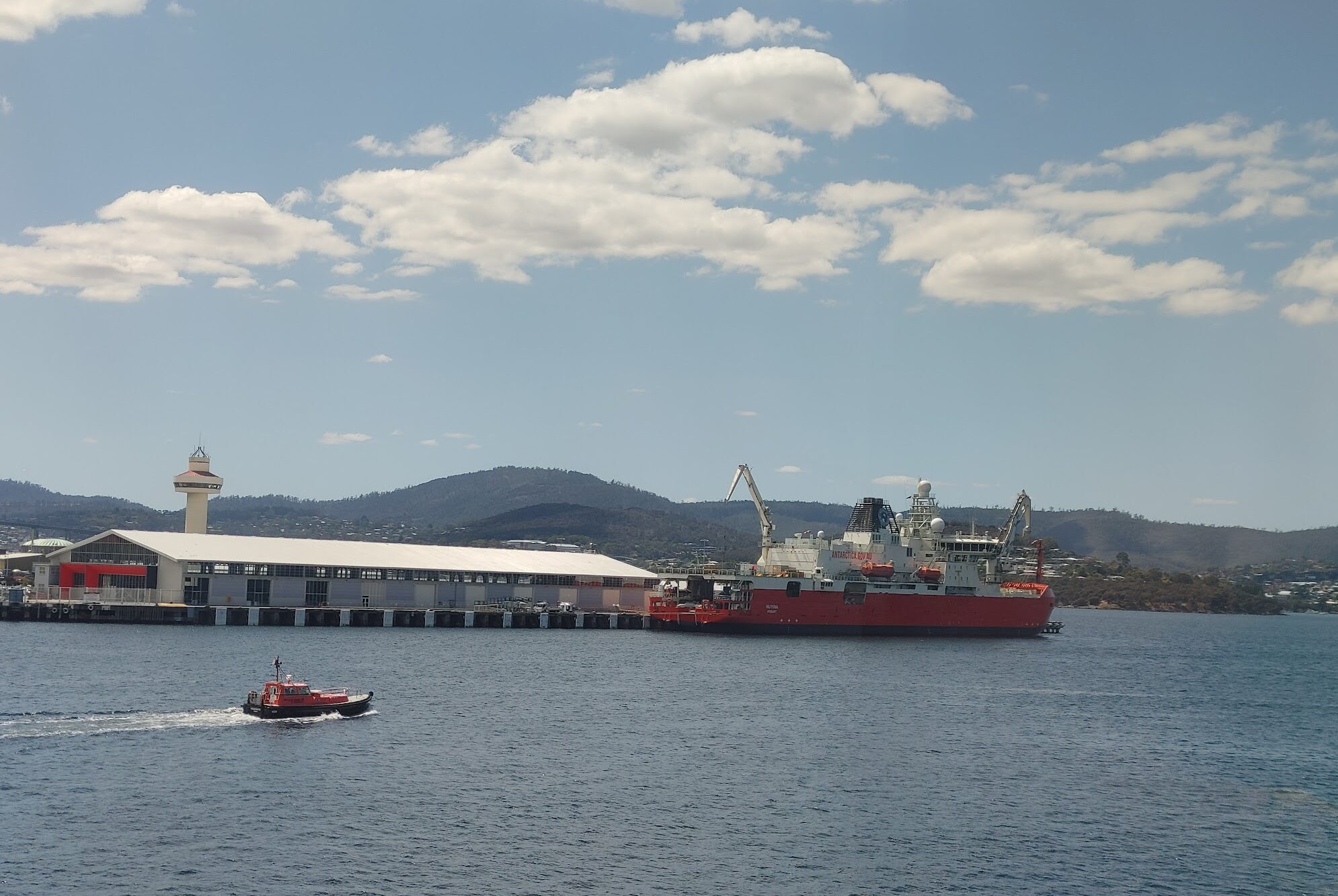Keeping Seal Taggers safe
The Department of Atmospheric Sciences' Kelsey Barber has embarked on an Antarctic voyage to conduct field work on the open waves. She has graciously agreed to chronicle her travels and provide an invaluable first-hand account of what it's like to conduct research in one of the most dangerous environments on our planet. Visit the landing page for Letter from Antarctica for all of the letters as they accumulate here.
By Kelsey Barber, March 31, 2025

Stapleton shoveling away at the constant deluge of snow and ice onboard - Photo by Pete Harmsen
There is something about a maritime environment that draws in a variety of people. This voyage is no different. For the science crew, going to sea is an infrequent experience or a once-in-a-lifetime opportunity. For the crew, this is their norm. So many pathways can lead you here, so one of the questions that I find myself asking everyone is “How did you end up on this voyage?”
I hope to share several people’s journey to working on an Antarctic research vessel. In this letter I will be doing a short profile of a field safety officer on board, with the next being of a fellow scientist.
Mick Stapleton, field safety officer
I am lucky enough to share a volunteer shift of sea ice observations with Mick Stapleton, the field safety officer for the seal tagging team. His job is to ensure that ice floes are safe for people to walk on in order to complete seal tagging operations. There is a long list of skills that the Australian Antarctic Division (AAD) of the country’s Department of Climate Change, Energy, the Environment & Water is interested in when hiring field safety experts. It is impossible for one person to have expertise in everything, so most field safety officers have a niche of experience. For Mick, if it involves watercraft or snow machines, his name is likely to come up when looking for a field safety officer.
In the southern hemisphere summers, Mick works as a field safety officer in Antarctica. But his homebase is Victoria, Australia where he works in the winters as ski patrol for a ski resort. His interest in skiing and snow is what started him on this career path. According to Mick, “most Australians don’t work in snow or have experience with snow machines,” so his experience as a ski patroller helped him stand out when applying for field safety officer positions.
Beyond that, Mick has a BA in Outdoor Education and a Diploma of Education. He taught secondary school previously and has experience as a white-water kayaking instructor. Teaching experience, especially in the outdoors, and training in water rescue and first aid are two things that the AAD looks for in field safety officers.
Even with Mick’s experience, it took him six years of applying before he was hired. A small-world connection between participants on this voyage is that during Mick’s first season in Antarctica, he was the safety officer for a field campaign run by another scientist, Benoit, who is on this voyage as well. Earlier their work involved riding snowmobiles around a sea ice field to map out the topography of the area. They lived in tents on the ice for 40 days. That was 20 years ago but both Mick and Benoit both still find themselves coming back to the Antarctic.
On this voyage, Mick helps to assess if a floe is safe for the seal team to walk on. He measures the thickness of the floe, making sure it can support the weight of the team walking around on it. He also checks for structural weaknesses like ridges, undercuts, or snow filled cracks in the ice. He is the first person on the floe and the last person off, ensuring that the whole operation is safe.


















